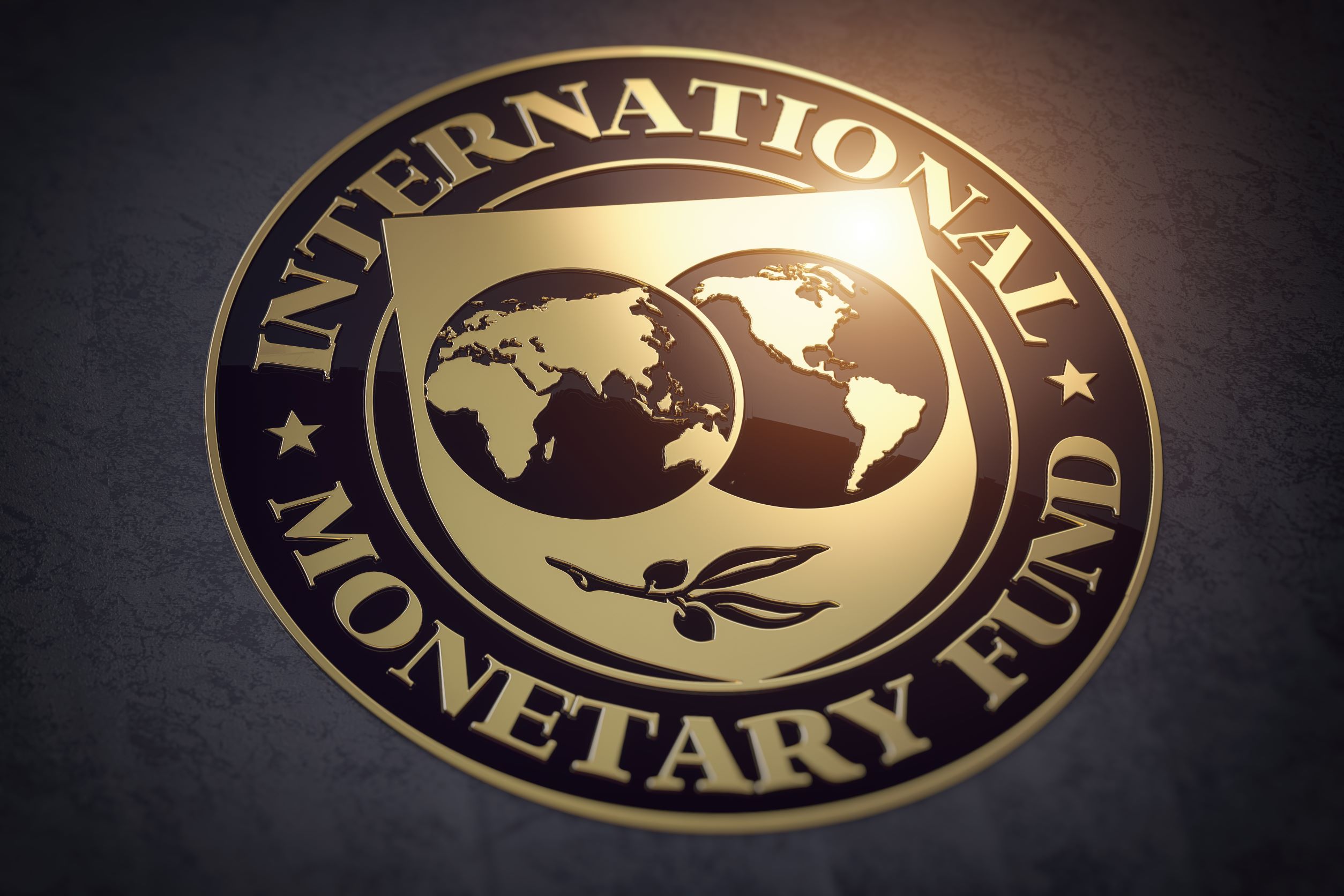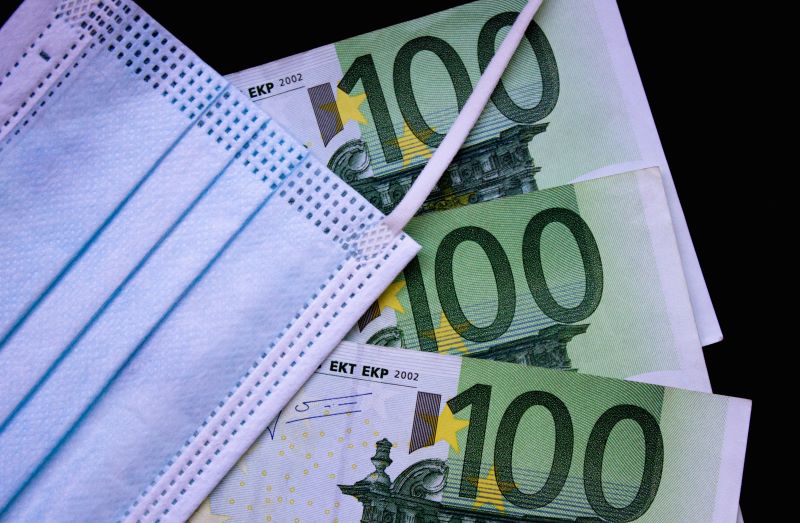Recommended
The unprecedented scale of IMF lending to low-income countries since 2020, carried out through the Poverty Reduction and Growth Trust (PRGT), was a bright spot in the otherwise lackluster multilateral response to the pandemic. But such bold actions are rarely without costs, and the rise in lending stretched thin the PRGT’s resources. The size of the resulting hole is still uncertain but it will need to be filled if the PRGT is to remain financially sound. We propose a long-term, multipronged strategy to preserve the PRGT’s viability below. A fuller discussion can be found in a new policy paper.
The scale and speed of the IMF’s initial response to the pandemic was impressive
The IMF provided essential support low-income countries (LICs) in the wake of the COVID pandemic. In 2020, commitments from the Poverty Reduction and Growth Trust (PRGT)—which lends only to LICs—rose almost sixfold from pre-pandemic levels to SDR 6 billion and this unprecedented pace of lending continued in 2021. The IMF expects lending to slow over the next three years but remain well above pre-pandemic so that the stock of PRGT credit outstanding would reach over SDR 21 billion in 2025, or more than three times its level prior to the pandemic.
But the surge in lending strained the PRGT’s finances
Richer countries responded rapidly by agreeing in 2020 to lend SDR 16.5 billion more to the PRGT for on-lending to LICs. A second round of fundraising to provide a further SDR 12.5 billion in loan resources was launched in 2021.
But the massive scale of lending is also depleting the PRGT’s subsidy resources, which allow it to lend to LICs at concessional interest rates—currently zero. But these subsidy resources are much harder to replenish as they cannot be loaned resources: they have to be hard cash to fill the gap left by the subsidized loans from the PRGT to LICs.
An initial fundraising effort launched in July 2021 seeks a total of SDR 2.8 billion of additional subsidy resources. This would cover estimated subsidy costs through 2024 and raise the sustainable lending capacity of the PRGT from SDR 1.4 billion per year before the pandemic to an average of SDR 1.65 billion per year from 2025. This injection of funds is also needed to bolster the reserves of the PRGT to provide safeguards for lenders to the PRGT. The bulk of the SDR 2.8 billion is expected to come from contributions by IMF member countries—essentially as grants.
Subsidy needs are likely to increase beyond those now envisaged by the IMF
The IMF’s subsidy resource funding target of SDR 2.8 billion is likely to be just a first urgent step to ensure that the PRGT has adequate reserves to respond to elevated demand in the short term. Under some plausible scenarios the additional financing needs of the PRGT in a second round of financing could be as high as SDR 3 billion. There are several elements to this:
- The subsidy costs from the surge in lending will increase if interest rates rise more sharply. Recent steps to tighten monetary policy in major economies and the persistence of inflation also suggests that policy rates, which are closely related to the SDR interest rate, are likely to rise more steeply than envisaged earlier
- The demand for financing could well be higher in the short term as the pressures on LICs are compounded by the war in Ukraine, including its direct impact on fuel and grain prices, and its adverse impact on global growth. The possible new emergency financing window to address food insecurity that is now being considered by the IMF would add to demand.
- A post-pandemic annual lending capacity of SDR 1.65 billion—as currently envisaged—may not be adequate. Climate change is very likely to increase the frequency and magnitude of adverse shocks requiring immediate support from the PRGT. The longer-term losses resulting from the pandemic are also likely to delay the “graduation” of LICs from the PRGT to the IMF’s non-concessional financing. And the experience since COVID struck suggests that it is prudent to building a buffer to allow the PRGT to respond to future emergencies without depleting capacity.
- The surge in lending in the pandemic will be echoed by a surge in repayments to the PRGT to over SDR 3 billion a year. If lending falls back in line with the envisaged annual capacity of SDR 1.65 billion from 2025, this would imply a large, sustained net withdraw of PRGT financing. But for many LICs in or on the verge of debt distress, successor PRGT arrangements are likely to be needed to provide a supportive policy framework and continued financial support. As a result, the stock of PRGT credit would stay higher for longer, adding to subsidy needs over at least the medium term and again pointing to the need for a larger lending capacity for the PRGT.
Where will additional PRGT financing come from?
It may not be realistic to expect a large proportion of additional financing need to be met by conventional donor contributions. These contributions have to come from government budgets—they can’t be loans. Progress in obtaining pledges for the first round of financing has been slow, with less than a quarter raised after nine months. The pressures on aid budgets are unlikely to abate and there is a risk that funding for the PRGT could squeeze out other urgent needs.
Sales of IMF gold could meet the needs of the PRGT but there are significant obstacles. Gold sales require the support of 85 percent of the IMF’s Executive Board, and US support, which in turn requires congressional backing, would be needed to meet this high threshold. Building a sufficient majority in support of sales could also be more difficult than in the past given that China and Russia are the two largest gold producers and together account for 9 percent of votes on the Executive Board. The IMF’s gold is seen as providing fundamental strength to the IMF’s balance sheet, allowing central banks to carry at full value on their balance sheets their quota and borrowed resources that the IMF’s intermediates to countries in economic distress. In current circumstances, a consensus for sales would need to be built against the backdrop of near-record-level IMF lending. If sales could be approved, they would need to be carefully phased to avoid potential disruption of the gold market. Coupled with the time needed to obtain support for sales, this implies a lag of several years from initial consideration of sales to eventual funding of the PRGT.
Some promising alternatives
SDR deposits by donors
As an alternative to budgeted donations, countries can lend some of their SDRs to generate income from low-risk investments. SDRs lent to the PRGT could generate a premium of some 50 basis points over the SDR interest rate paid to lenders, and these returns would accrue to the PRGT subsidy account. The IMF has already recognized this approach as a source of funding for the PRGT and now the RST. The liquidity and low risks of these holdings would also preserve their reserve asset characteristics—a key prerequisite laid out by the G20 for any recycling of SDRs. Providing subsidy resources to the PRGT in this manner would also typically not require a budget appropriation or be considered as part of government spending. But very large deposits would be needed if the objective was to quickly generate income to supplement the PRGT’s endowment: deposits of SDR 10 billion would be needed to earn an expected $50 million of subsidy resources per year.
PRGT Administrative Cost Reimbursement should be terminated
The first phase of fundraising includes the suspension of reimbursement to the IMF’s General Resources Account (GRA) of the administrative costs of running the PRGT, including staff costs. This will provide savings to the PRGT of about SDR 0.5 billion through 2025/26. The cost estimates underlying the first round of fundraising assume that reimbursement begins again in 2025. If reimbursement does not resume, the self-sustained capacity would be significantly higher.
Permanently ending reimbursement would require policy changes. Reimbursement was an integral part of the IMF’s New Income Model approved in 2008 and was based on the principle that the IMF’s usual resources (in its General Resources Account) should not cross-subsidize the PRGT’s activities. The bulk of the IMF’s other activities, such as surveillance, are considered public goods and therefore not subject to any form of user charge. But the distinction between public goods and other IMF activities is somewhat tenuous. There is, for example, a clear public good aspect to lending operations in the GRA which, in addition to providing support to individual countries, lessen the risks of financial contagion. The public good aspects of PRGT lending have been evident during the pandemic. In addition, while reimbursement was seen as necessary to fund the IMF’s administrative budget over the longer term, high levels of lending have dramatically improved the budget outlook.
The combination of ending a requirement to reimburse the GRA and subsidy income from SDR deposits could significantly raise the PRGT’s lending capacity.
- If the first round of fundraising was completed successfully, leaving a self-sustained landing capacity of SDR 1.65 billion, this could be raised to SDR 2 billion by permanently ending reimbursement of the GRA.
- In a more adverse scenario, in which the first phase of fundraising yielded its target of SDR 2.8 billion but all of this was required to meet the higher costs of lending through 2024, lending capacity would be constrained to about SDR 1.4 billion. In this case, ending reimbursement would bolster the lending capacity to about SDR 1.8 billion.
- In this adverse scenario, a combination of ending reimbursement and subsidy income from deposits of SDR 10 billion could raise the future lending capacity to over SDR 2 billion per year.
A multipronged, multiyear strategy needs to start now
The future financing needs of the PRGT are still very uncertain. But given the risks, a multipronged effort is needed to ensure that the PRGT will meet the needs of LICs over the next decade:
- Reinforce the effort to mobilize SDR 12.5 billion of recycled SDRs for the PRGT loan account and SDR 2.8 billion for the subsidy and reserve accounts. Without these funds the PRGT is in danger in the immediate future.
- Publicize the PRGT’s Deposit and Investment Account and urge donors to loan SDRs to it as part of their reserves management strategy. Set a target for fundraising over the next five years. This will help fill the temporary gaps that may result from fluctuating demand.
- Begin discussions on terminating the reimbursement of PRGT administrative costs to the GRA beyond 2025/26, taking account of any legal constraints posed by the Special Disbursement Account.
- Begin discussions on possible gold sales to take place in the out years when the longer-term projections for support from the PRGT have settled down.
Each prong of the effort should start immediately, given the pressing needs of the PRGT and the time it will take for the Executive Board to reach consensus on moving forward. Delaying any component risks jeopardizing the viability of the PRGT beyond 2025.
Disclaimer
CGD blog posts reflect the views of the authors, drawing on prior research and experience in their areas of expertise. CGD is a nonpartisan, independent organization and does not take institutional positions.






